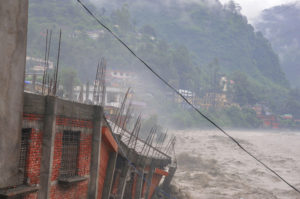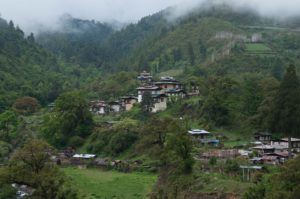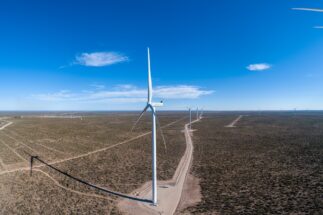Pakistan’s Prime Minister Imran Khan is determined to address three challenges: low-income housing, vertical expansion, and the creation of millions of jobs. In August 2020, he linked all three to what is soon to become his party’s pet project, the Ravi River Urban Development Project (RRUDP), that runs along the Ravi River from a northeast to southwest direction. According to the plan, it involves the construction of a 40,000 hectare (1,000 square kilometre) planned city on either side of the river, while also channeling and rehabilitating the river into a perennial freshwater body.
The PM hopes that the Ravi City project costing PKR 5 trillion (USD 30 billion) will create millions of jobs as at least 40 industries are connected to the construction sector. He said the project would be completed in three phases, and the wealth created from this project would be spent on education and health. His government, too, said that the project will “save Lahore by stopping the spread of unplanned urban sprawl, raise the water table and revive the river Ravi, preventing it from becoming a sewerage nala”.
The governing party, the Pakistan Tehreek-e-Insaf, has also repeatedly emphasised how the project will ensure the plantation of millions of trees in a forest area, generate tremendous foreign exchange, and lead to cleaner water.
Experts, though, are conflicted about whether the plan will come to fruition, and if it does, whether it will sustainably address Lahore’s numerous challenges, which include the shortage of safe drinking water, inadequate drainage, overpopulation and environmental degradation.
Tensions with India
A major hurdle is the transboundary nature of the Ravi, which is one of the six rivers whose use is managed under the Indus Waters Treaty (1960) between India and Pakistan. Each country was given the use of three rivers (with some non-consumptive use allowed for India for rivers flowing through territory under its administration). The Ravi is one of the rivers whose use was allotted to India.
As political tensions continue to escalate between the two countries, the Indian Prime Minister, Narendra Modi, has earlier vowed to not let one drop of “Indian” water flow into Pakistan, though India has not stopped any of the water flow mandated by the treaty.
Modi’s statement may not have any real impact on Imran Khan’s new city plan.
“It’s a political statement,” said environmental lawyer Ahmed Rafay Alam. “Both countries indulge in these from time to time.”
Read: ‘Dialogue offers only hope for India and Pakistan’
Alam suggested that both the hydrology and the engineering of the area prohibit India from doing anything rash. “India has developed canal water networks as has Pakistan, the network of which provides water to Punjab, Haryana and even Rajasthan. If they stop the water, they will end up flooding their own territory. If they release the water, they will end up starving it. So why would they?”
That said, India has often released a few thousand cusecs of water into the Ravi in the monsoons when water has been surplus, said the director of WWF Pakistan, Hammad Naqi. According to him, while the IWT did allot the eastern rivers to India, Pakistan, as a, “lower riparian [country also] has rights, not just under a treaty but even because of ecology. If Ravi is run completely dry it should not be acceptable.”
In fact, the water on the Pakistani side of the Ravi may not even be India’s to control, according to Vaqar Zakariya, the director of Hagler Bailly Pakistan.
“On the Indian side the river is glacier fed and rain fed both; in Pakistan, it is rain fed,” he said. “In that context, we are not depending on India for water. If there is a 50 to 100-year flood, Thein dam will have nothing to do with that. It will come because of rains with the same intensity whether there is a Thein or a Madhupur Reservoir on the other side. Larger floods will always be sent towards us, but the regular five to 10-year floods will end up being decreased here because the dams will be able to store extra water.”
Conservationist and architect Fauzia Qureshi is of the same opinion. “The Ravi’s waters belong to India. Whether they keep all of it or not, it’s their choice. Yes, in the winters there is bound to be less water since there are fewer rains,” she said. “As for the development of the city project, the government means to divert waters from the Chenab River.”
Qureshi said that India used to release water into Pakistan when they had excess water in the monsoon. “They would not like their dams to overflow.”
All of Lahore’s master plans have their backs to the river – the city was always meant to be on the banks of the Ravi, not along it. The city developed eastwards and southwards. “Now that India has built the dam, Ravi’s expanse will lessen, but there will always be water in it because of the rain,” Qureshi said. “Only now there will be more sewage than water.”
A city by a river of sewage
There is another problem with the city by the river, and it is related to the quality of the water, not the quantity, and that problem is all on the Pakistani side.
“We do not depend on Indian water,” said an official of the Punjab Planning and Development Department on condition of anonymity. “We have three link canals and the Siphon (BRB) canal. There is enough water. Yes, there is dirty water too but we plan to treat it before it flows into the river, and we also plan to have lakes and three other barrages that we have built.”
The idea is to channel the water so it runs through the concrete jungle of buildings on either side. Fauzia Qureshi said it will be thousands of cusecs of sewage and nothing else.
“Water coming from India is muddy brown and is good, clean water, with fish etc.” she said. “At the point it enters Lahore, it becomes black with sewage that flows through the drains, all carrying Lahore’s industrial and domestic waste. Babu Sabu, Mehmood Booti, and Hadiyara – originally these were storm water drains, they were never sewage drains. WASA (Water and Sanitation Authority) for its own convenience has diverted sewage into the river instead of treating it. In fact, these drains were meant to be tributaries of the Ravi.”
Both she and Zakariya believe that sewage treatment plants must be set up and the river must be revitalised. Without it the new city will only be surrounded by wastewater.
Read: Pakistan launches drive against crops grown with wastewater
“We can clean up sewage water using bioremediation. We need extra land but anyway that is already available in the agricultural land along the river. We also need to leave the floodplains alone.”
Around 3,500 cusecs of sewage water daily end up dirtying the clean water of the river, Alam said. According to estimates, PKR 3.5 billion [USD 21 million] is needed just to clean the water coming from Lahore. And then you have effluent coming in from Gujranwala, Faisalabad and other places. “The Asian Development Bank was helping revitalise the Ravi basin but we have to decide what will the water be cleaned for. For irrigation? For children to play in? ADB’s project to revitalise the basin was a dramatically different project than this short-sighted one.”
Flood alert
A further complication comes from a city design that is heavy on concrete, and low on natural management of the river. According to data, floods along the Ravi are big every three to five years – and spread around one kilometre on each side. Once in 20 years, a flood is even bigger, with a spread of two kilometres on each side. The project visualises an embankment area for a one-in-a-100 year flood, building a wall which would be very expensive, one kilometre wide and six kilometres long. But there is no floodplain, so where will all the water go?
Read: Why Lahore floods, and how to stop it
Instead of this wall, experts argue that there should have been a national park, or land utilised for agriculture and forestry
When the bigger floods come, there will be massive destruction, said Zakariya, adding that the government had blinkers on.
“What we should aim to have is a ‘living river’ not channelised water and barrages. [The land should be kept] for the people, not converted into real estate. This way, the government won’t have to spend trillions in taxpayers’ money into building ugly structures.”
Meanwhile everything about the project could well just be rhetoric, because some believe it may never materialise.
“I don’t think it will get anywhere,” said Alam. “At this point the Lahore Development Authority has issued a tender asking for expressions of interest of consultants; they are in the feasibility stage,” he says. “That said, in 2013 the previous government had to cease the project because it was not financially viable. What [new thing] has this government seen if the last one dumped it?” he asked.
One environmental expert, speaking on condition of anonymity, said the new construction package allowed developers to market a scheme before getting a No Objection Certificate (which is an LDA requirement).
“How do you overcome the requirement? By carving the project out of the LDA’s jurisdiction and handing it to a newly made Riverfront Authority, which has no building, no managing director, no employees?” he said. “Is this an investment balloon for making a quick buck leaving investors in the lurch? It sure is beginning to look like it.”
“Basically, it is all about the land and the bigwigs who will end up benefiting from it,” said Fauzia. “Affordable housing? Only to the corporate world and the rich.”
![<p>A view of the River Ravi from Lahore [image: Alamy]</p>](https://dialogue.earth/content/uploads/2020/09/2AHHPFX-300x200.jpg)







